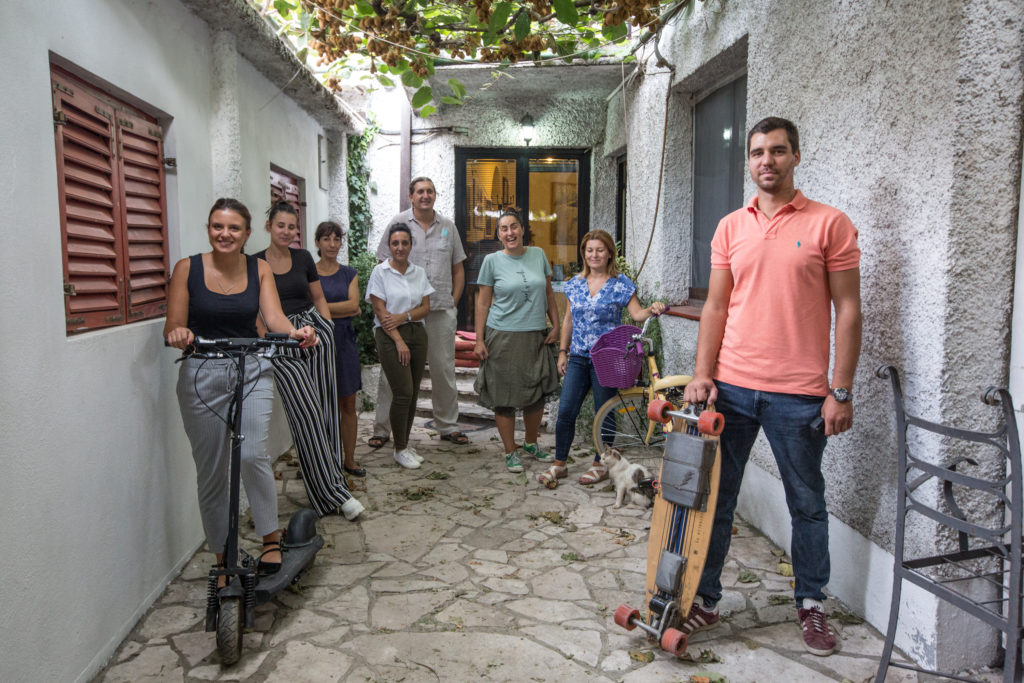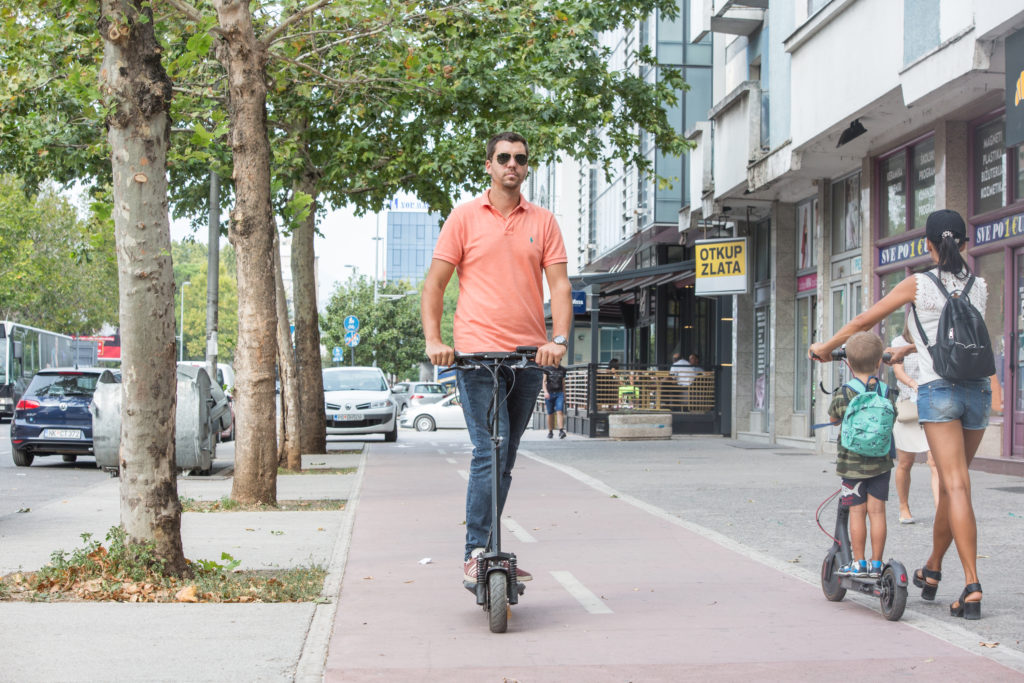People in the NGO ADP ZID office are working diligently. While wearing masks and social distancing, colleagues are jointly preparing new projects that will kick off in the autumn. One of them is Vukašin Rakočević, who is just getting ready to go to an important meeting.
We found him as he was about to go to the other end of town on his electric scooter, since the meeting was scheduled to be held there. He explains to us that it is his team’s scooter, which is used by all the colleagues as and when needed: when they need to go to a meeting, get some administrative duties done or buy breakfast for the whole team. An interesting fact is that this is a hand-made electric scooter, and our interlocutor is actually its creator.
“As electric scooters became more and more popular, we came up with the idea to get one for our team. With factory-made scooters there is a maximum rider weight limit and they do not have enough power for people who are taller or heavier than average. That is why I decided to make one prototype model, which can withstand a person up to 150kg and even then move without difficulty. One of the requirements was that my colleague Igor, who is 203 cm tall, can ride that scooter “, Vukašin explains to us.

During the making of the electric scooter, he used the experience he gained last year when he built the first electric longboard in Montenegro. A longboard resembles a skateboard, but it is larger, faster and more stable. He procured electric scooter parts from the Netherlands, America and China.
“Firstly, it was important to make a list of all required components, then find all the sellers and have all the parts successfully shipped to Montenegro. Once the parts arrived, it took me about seven days to put it all together. Assembling the battery took the most, because it requires a lot of calculations, soldering and testing, before that battery was finally fitted into the scooter itself”, Vukašin explains the process of building a custom electric scooter.
In order for colleagues to have stats overview while riding, Vukašin also installed a display, with speed, battery level and mileage readouts. He is proud of the maximum speed of this scooter, which is 60 km/h, and that its range is approximately 20 km with a single charge.
“Riding an electric scooter provides great pleasure, and at the same time saves time and money. It can take you anywhere quickly, it is light, so you can carry it with you, you do not have to worry about parking, you do not wait for a taxi and most importantly now – while riding a scooter, you cannot contract corona virus”, Vukašin lists all the advantages of this alternative mode of transport.

However, he says that driving an electric scooter should not be taken lightly. It is necessary to acquire certain skills, master the “vehicle”, and only then go out on the street.
“The good news is that, at least in Podgorica, more and more bicycle lanes are being built and that the streets are being repaved, so that riding an electric scooter is becoming ever safer,” says our interlocutor.
And we checked with Stefan Bulatović from the non-governmental organization Biciklo.me whether there any piece of legislation that regulates electric scooter use.
“Electric scooters are an alternative mode of transport that is practical and efficient, but they must be used responsibly. Scooters are still not recognized in the relevant legislation, primarily in the Law on Road Transport Safety, which is why there is often confusion about where and how they should be ridden. We expect from the Ministry of the Interior to start the work on amending the aforementioned Law as soon as possible, in order to regulate the use of electric scooters in an appropriate manner, and our NGO is ready to provide any expert assistance needed,” says Stefan.
We talked with Vukašin and Stefan on the occasion of the European Mobility Week, which is currently underway. The aim of the European Mobility Week campaign, which has been organized every year since 2002, is to improve public health and quality of life by promoting clean mobility and sustainable urban transport. This year’s theme is ‘Zero-emission mobility for all’. This theme reflects the European Commission’s ambitious goal of making Europe a carbon-neutral continent by 2050 – i.e. emitting only as much carbon dioxide as nature is able to absorb, thus eliminating one of the main factors of climate change.
European Mobility Week 2020 emphasizes the importance of affordability of zero-emission transport and promotes an inclusive framework which leaves no one behind. Therefore, this campaign encourages people and local authorities to take steps in order to achieve the long-term goal of a carbon-neutral continent.
Accordingly, Vukašin has one final message:
“Perhaps other companies could follow the example of ADP Zid, enable their employees to use such means of transport and thus contribute to their popularization and reduction of traffic jams and pollution.”



